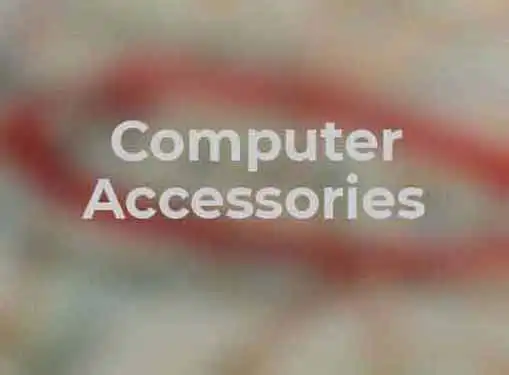Computer Accessories
Computer Accessories for the Disabled
Hiring a disabled worker is an admirable decision, but it means you'll need special disability-friendly computer accessories. Here's a short primer on assistive technology computer accessories for people with disabilities.
Disabled workers present unique challenges for the owners or small and medium-size businesses.

Highly qualified employees sometimes suffer from physical disabilities that hamper their ability to conduct office routines that other workers take for granted. In certain instances, ADA requirements may even mandate the implementation of equipment that is designed to accommodate the needs of disabled staff.
To determine the kinds of assistive technologies you need for your workplace, you will have to assess each worker's requirements on a case-by-case basis. Some technologies may be cost-prohibitive while others can be purchased for a reasonable price. Assistive technology manufacturers are constantly rolling out new solutions for the workplace, but there are many commonplace computer accessories that are already available.
- Keyboards for the disabled. Assistive technology keyboards are popular in many workplaces. Ergonomic keyboards reduce the strain on wrists and hands for employees with carpal tunnel or repetitive stress injuries. Depending on the nature of your employee's disability, you can also purchase chorded keyboards (fewer keys), expanded keyboards (wider spaced keys), large print keyboards, high-visibility keyboard stickers and other keyboard accessories.
- Keyboard & mouse alternatives. If using a traditional keyboard or mouse is out of the question, disabled workers can employ resources like voice recognition software, a foot mouse (controlled by a series of pedals), joysticks, trackballs and other assistive devices.
- Lomak keyboards. Lomak devices are the solution of choice for workers who suffer from severe physical impairment. Instead of using their hands, workers operate their computers by carefully moving a light-activated device that is mounted to their heads.
- Magnifiers & readers. There are many devices on the market to help visually impaired employees interact with their computer screens. It's not uncommon to find devices that serve a dual role of magnifying the screen and reading text aloud.
- Alternate Computer Control Systems (ACCS). ACCS systems represent the pinnacle of assistive devices and are designed to give a full range of dexterity and functionality to employees who suffer from full or partial paralysis.
- Ergonomic accessories. By far, the most common (and affordable) assistive technology product are ergonomic accessories like furniture, footrests, wrist rests and other products that ease the strain on the average worker.
Share this article
Additional Resources for Entrepreneurs



Conversation Board
We greatly appreciate any advice you can provide on this topic. Please contribute your insights on this topic so others can benefit.